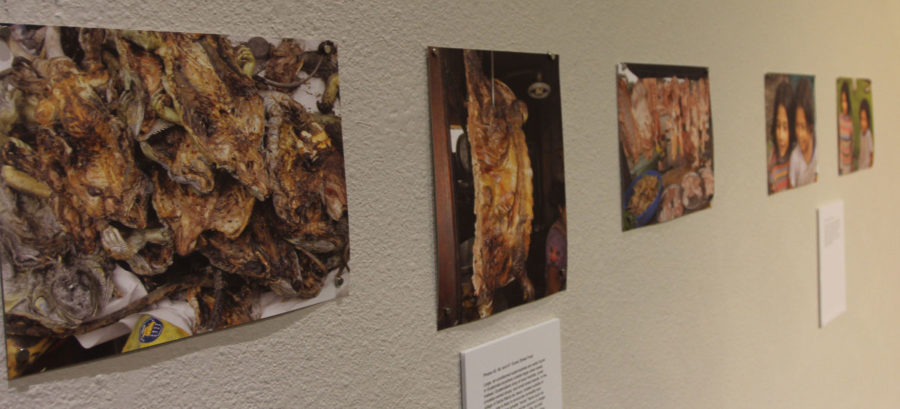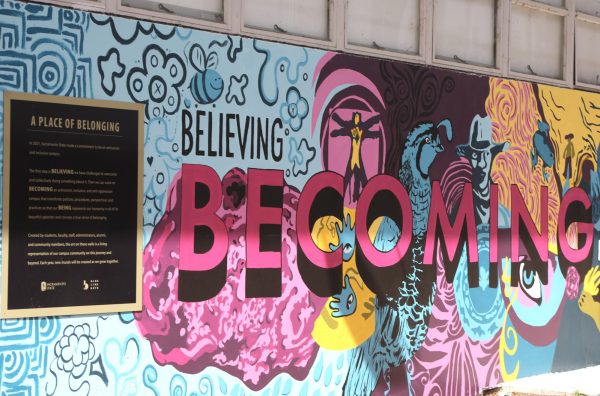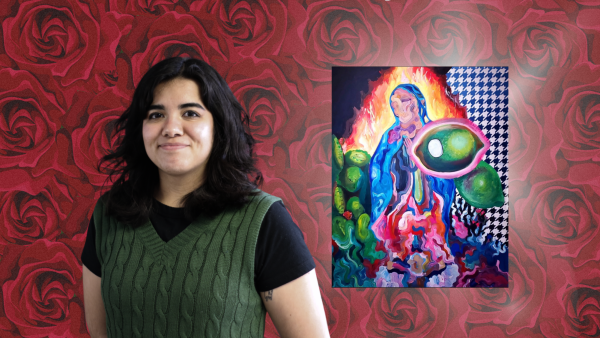Library gallery opens “window” to Guatemala
Most food is shopped in local markets with rarely any supermarkets. Images found in North Hall Gallery in the library.
November 19, 2015
This November, the University Library Gallery opened a window to Guatemala though the photo exhibition “Guatemala Today: Beyond the Headlines.”
The photos were shot by Sacramento State Spanish professor Edward Baranowski in collaboration with Chelsea Ramazzini.
The exhibition, with the main objective being to promote Guatemala to the Sac State community, is composed of about 50 photos taken by Baranowski, with informational didactic cards by Ramazzini, admissions coordinator for CASA de ESPAÑOL Center for Language and Culture.
The 50 photos demonstrate the everyday life of Guatemalans, and is part of an effort to destigmatize the negative image Americans have about Guatemala.
Guatemala is a third-world country located in Central America with a population of about 15 million people, 51 percent are indigenous. It is a country rich in cultural diversity biodiversity and landscapes. Unfortunately it is chased by a dense, dark and bloody past that opaque its enrichment.
As demonstrated in the exhibition, the country was involved in a civil war from 1960 to 1966 where about 200,000 people were killed.
The country, which is still dealing with the aftermath, struggles with political instability and has alarming statistics regarding poverty, child malnutrition and literacy.
But despite all the negative statistics, the exhibition itself displays Guatemala’s more meaningful place in the world.
Ramazzini, who has lived in Guatemala and is married to a Guatemalan, explained the exhibition provides the audience with more realistic and inclusive images of Guatemala.
“By sharing our personal experiences, paired with concrete investigative research, we are showing the Sacramento State community, and the community at large, a different take on Guatemala than what they might see on the news,” said Ramazzini.
More than a thousand photos were taken by Baranowski throughout his multiple trips to Guatemala in 2006, 2009, 2010 and 2013. Baranowski explained it was not until last year that he came up with the idea of having the photos on display.
He also mentioned all the photos were taken with a digital camera to document the experience for himself and for his students.
Baranowski explained that tourists choose to go to Costa Rica, the Caribbean or Mexico, but Guatemala is a cultural rich country that offers a revelation to anyone who goes there.
“Guatemala is more than a headlines, it is an actual country that is worth visiting,” said Baranowski. “There is another side of Guatemala and you only get to know it if you go there.”
He said each of the photos emphasizes Guatemalan lifestyle. Viewers have the opportunity to see and experience funeral rituals, food choices and the traditional clothing of the indeginous people living there.
Anna Berlo, a retired Sac State teacher who has a Guatemalan daughter-in-law, said the photos and texts in the exhibition were an open door to having a better comprehensible understanding of her daughter-in-law’s country.
“I love to see art and this [the exhibition] is more than that,” Berlo said. “It is an experience of Guatemala that helps me understand more about my daughter-in-law.”
Another interesting fact viewers can experience throughout the photo exhibition is Guatemala’s strong family orientation.
Throughout the display, Baranowski pointed out that although Guatemala is a poor country, it is a very happy country.
“They are not poor because they have themselves,” Baranowski said.
The exhibition is expected to be on display the entire month of November.
Ramazzini and Baranowski encourage the Sac State community to go and experience for themselves the real image of Guatemala.
“A friend of mine summarized it well when he referred to Guatemala as ‘such a place of paradox: poverty and injustice along with so much happiness,’” Ramazzini said.









































































































































